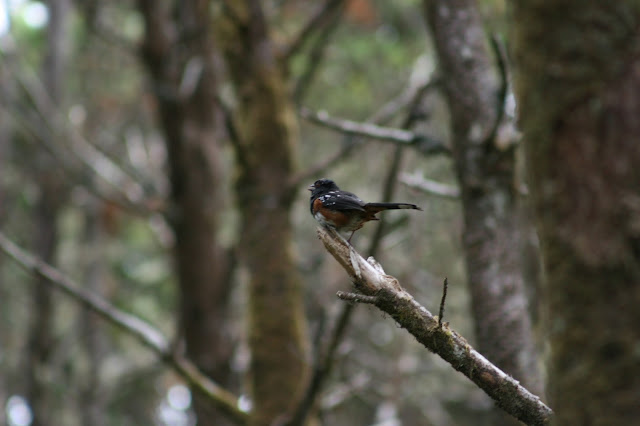These are not great photos, but they do prove that I have had a Lazuli bunting visit my home! This is the first Lazuli bunting I've seen, and I now know that there is a mated pair nesting in a big Douglas Fir on my property. The two birds come down to forage in our backyard either early in the morning or late in the afternoon. I'll try to get better images if the opportunity permits it.
Mike's Birds
God did some of his best work with feathers.
Tuesday, July 17, 2018
"House Finch Eye Disease"
This unfortunate American goldfinch appears to be infected with the House Finch Eye Disease. He's been hanging around the property for about a month and seems to be faring okay. Interestingly, the other goldfinch don't chase him away from the feeder, as they do to the other goldfinch (we have at least two breeding pairs visiting our feeder). I don't know the prognosis of the disease, but I hope this little guy gets better!
Wounded Juvenile Bald Eagle
I was enjoying the buzzes of the local cicadas, when I noticed a large bird walking through my corn patch! To make a long story short, it ended up being a 10-week old newly fledged Bald eagle. It was near starved to death and very dehydrated. Here's a picture of it peeking through the fence, and the video was taken by my wife Robbie. The raptor rescue organization (Birds of Prey NW) we contacted asked that I move the bird from the sheet I caught it with into a cardboard box.
At the last update I received from Birds of Prey NW was that the bird has a broken wing, but the bird was a good candidate to be rehabilitated and released. I'll keep you updated as information is received. And, I'm exited to report, is that the bird will be released on our property once it is in a condition to returned to the wild.
Thursday, July 7, 2016
Tree Swallows
A pair of Tree swallows were nesting under a boat cover at Glengary Bay, on Lake Pend Oreille in North Idaho near where I moor my sailboat. Hopefully the babies will fledge before the boat owners decide to uncover their boat. You'll see the nest as indicated by the feathers clinging to the canvas cover, just under the notch that accommodates the aft bar of the forward pulpit.
Subscribe to:
Comments (Atom)






















